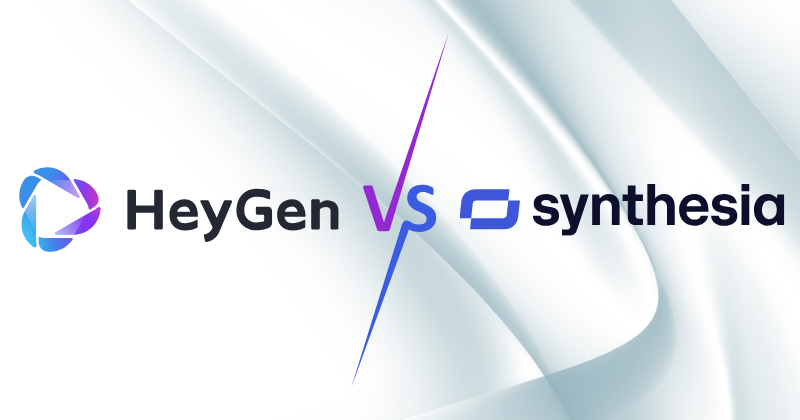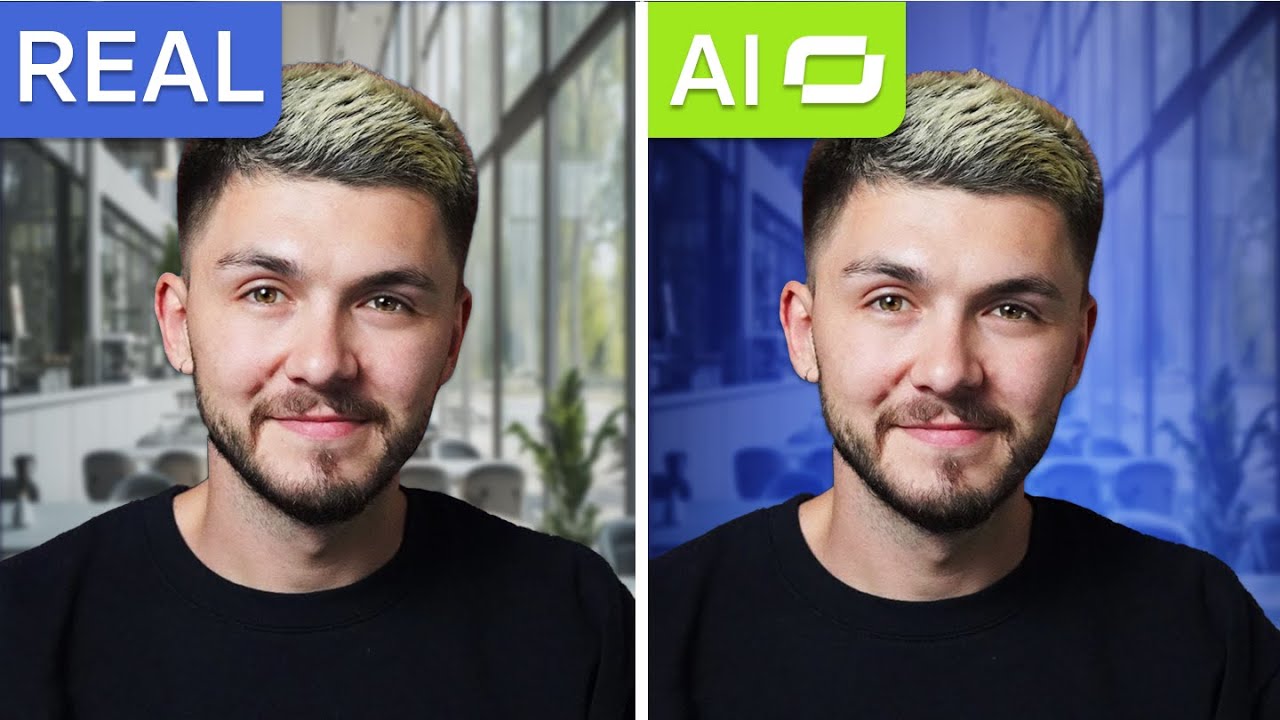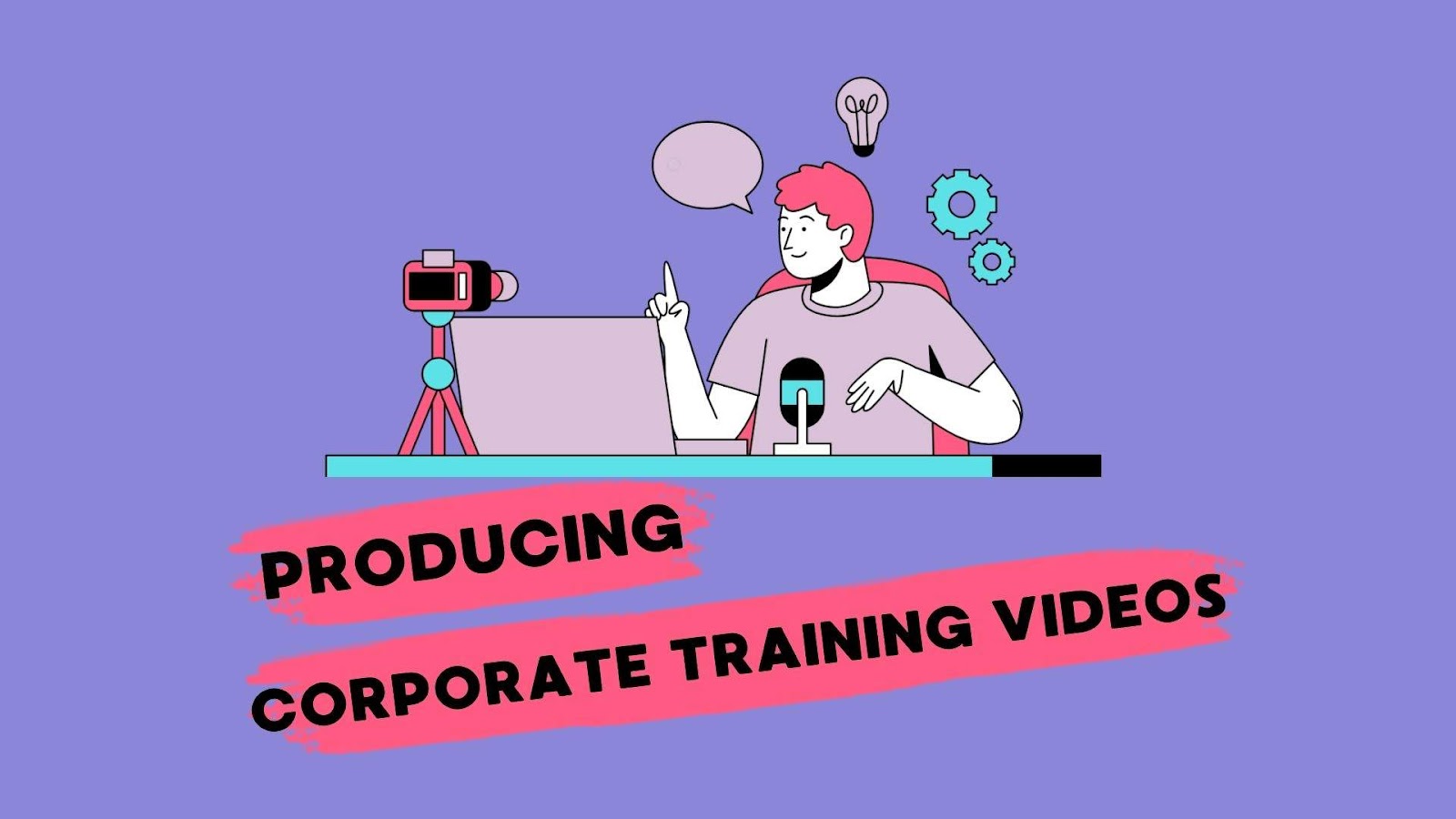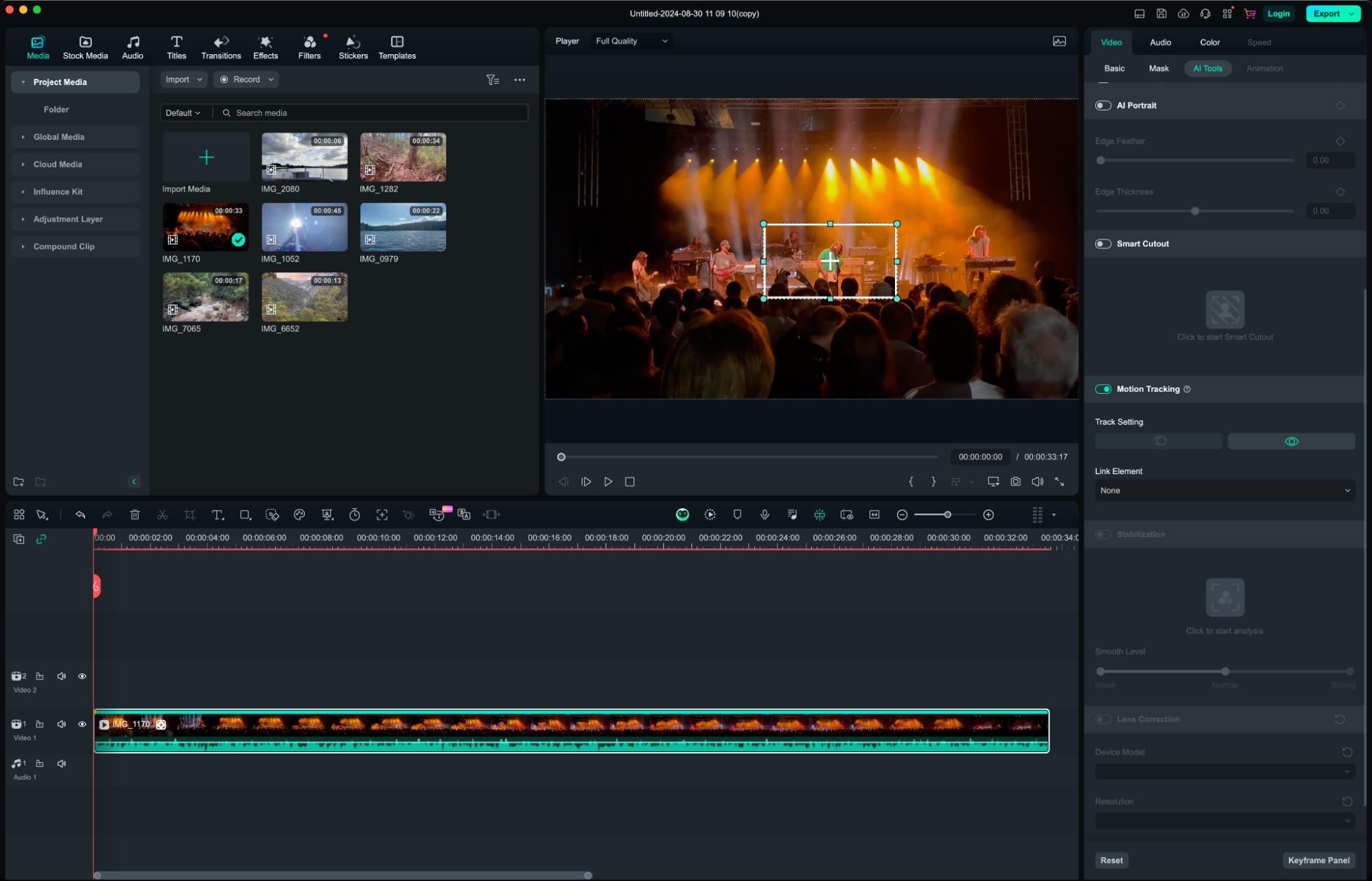HeyGen vs Synthesia: The Ultimate AI Video Generator Showdown in 2025

The world of content creation is in the midst of a seismic shift, and at the epicenter of this transformation are AI video generator platforms. These revolutionary tools are democratizing video production, allowing businesses and individuals to create high-quality, professional videos without the need for expensive equipment, actors, or complex editing skills. In this burgeoning market, two names have emerged as frontrunners: HeyGen and Synthesia. This article provides an in-depth HeyGen vs Synthesia comparison, exploring every facet of these powerful platforms to help you determine which is the right video creation platform for your needs.
The demand for engaging video content has never been higher, and AI video software is stepping up to meet this demand. From marketing and sales to corporate training and social media, the applications of AI-generated video are vast and varied. As we delve into this comprehensive AI video generator comparison, we'll examine the features, use cases, pricing, and overall value proposition of both HeyGen and Synthesia, providing you with the insights you need to make an informed decision.
What is HeyGen? A Closer Look at the Challenger

HeyGen has rapidly gained popularity as a versatile and user-friendly AI video maker tool. It's designed to be intuitive, making it an excellent choice for a wide range of users, from solo creators and small businesses to larger marketing teams. At its core, HeyGen is a powerful video creation platform that leverages artificial intelligence to transform text into engaging video content.
Key Features of HeyGen
HeyGen's feature set is designed to provide a seamless and efficient video creation experience. The platform boasts a wide array of tools that cater to both novice and experienced video creators.
Advanced AI Avatars and Voice Cloning
One of HeyGen's standout features is its impressive library of AI avatars. These are not just static images; they are dynamic, expressive digital presenters that bring your scripts to life. The platform offers a diverse selection of over 100 stock avatars, but the real magic lies in its custom avatar creation capabilities. You can create a personalized avatar from a single photo, allowing you to have a consistent and recognizable digital representative for your brand. These photo avatars and instant avatars are a game-changer for personalized marketing and communication.
HeyGen's talking avatars are brought to life with advanced lip-syncing technology, ensuring that the avatar's mouth movements perfectly match the audio. This attention to detail results in a more natural and believable viewing experience. Furthermore, HeyGen's voice cloning feature allows you to create a digital replica of your own voice, adding another layer of personalization to your videos. The platform's text-to-speech engine is also top-notch, offering a wide range of natural-sounding voices in multiple languages.
Intuitive User Interface and Customization

HeyGen is renowned for its user-friendly interface. The platform features a drag-and-drop editor that simplifies the video creation process, making it accessible to users with no prior video editing experience. You can easily add text, images, and other media to your videos, and the intuitive timeline makes it easy to arrange and edit your scenes. HeyGen also offers a rich library of video templates, providing a great starting point for various types of videos, from social media clips to product demos.
Use Cases for HeyGen
HeyGen's versatility makes it suitable for a wide range of applications. Its ease of use and powerful features make it a popular choice for:
•Social media content: Quickly create engaging videos for platforms like Instagram, TikTok, and Facebook.
•Product explainer videos: Clearly and concisely demonstrate the features and benefits of your products.
•Marketing videos: Create compelling video ads and promotional content to drive engagement and conversions.
•Personalized sales videos: Create customized videos for individual prospects to increase engagement and close more deals.
Pros and Cons of HeyGen
Pros:
•Highly realistic and customizable AI avatars.
•Excellent voice cloning and text-to-speech capabilities.
•Intuitive and easy-to-use drag-and-drop editor.
•Affordable pricing with a free plan available.
Cons:
•The free plan has limitations on video length and features.
•Some advanced features are only available on higher-tier paid plans.
What is Synthesia? The Established Leader in AI Video
Synthesia has long been considered the gold standard in the AI video generator market. It's a robust and feature-rich platform that has been widely adopted by businesses of all sizes, particularly for corporate training and communication. Synthesia's focus on creating professional, high-quality videos has made it a favorite among enterprises looking to scale their video production.
Key Features of Synthesia
Synthesia's feature set is geared towards professional use cases, with a strong emphasis on quality, scalability, and collaboration.
High-Quality AI Avatars and Multilingual Support
Synthesia is renowned for its library of over 140 high-quality AI avatars. These avatars are known for their natural appearance and movements, making them ideal for professional presentations and training materials. Synthesia also offers the ability to create a custom avatar, ensuring that your brand is represented consistently across all your video content. The platform's lip-syncing technology is incredibly accurate, further enhancing the realism of the talking avatars.
One of Synthesia's greatest strengths is its extensive multilingual support. The platform supports over 120 languages and accents, making it an invaluable tool for global companies that need to create training materials and communications for a diverse workforce. The automatic translations feature is a significant time-saver, allowing you to quickly and easily localize your video content.
Professional Templates and Collaboration Tools
Synthesia provides a wide range of professionally designed video templates that are tailored for various business use cases, such as employee onboarding, compliance training, and corporate announcements. These templates can be easily customized to match your brand's visual identity. The platform also includes a built-in screen recorder, which is perfect for creating software tutorials and product demos.
For larger teams, Synthesia offers robust collaboration features. Multiple users can work on the same video project, and you can share feedback and comments directly within the platform. This makes it easy to streamline the video creation workflow and ensure that everyone is on the same page.
Use Cases for Synthesia
Synthesia's features make it particularly well-suited for:
•Corporate training videos: Create engaging and effective training materials for employees, partners, and customers.
•Employee onboarding: Welcome new hires with professional and informative videos.
•Compliance training: Deliver mandatory training on topics like security and data privacy.
•Corporate communications: Share important company updates and announcements with your team.
Pros and Cons of Synthesia
Pros:
•Exceptional video quality and highly realistic AI avatars.
•Extensive multilingual support with over 120 languages.
•Robust collaboration features for teams.
•Excellent for professional and corporate use cases.
Cons:
•Can be more expensive than some HeyGen alternatives.
•The platform has a steeper learning curve compared to HeyGen.
•Content moderation can sometimes lead to delays in video production.
HeyGen vs Synthesia: A Head-to-Head Comparison

Now that we have a good understanding of both HeyGen and Synthesia, let's put them head-to-head in a direct AI video generator comparison. This will help you see how they stack up against each other in key areas.
Avatar Quality and Customization
Both HeyGen and Synthesia offer high-quality AI avatars, but there are some key differences. HeyGen's strength lies in its custom avatar creation from a single photo, which is a quick and easy way to create a personalized avatar. Synthesia, on the other hand, requires a short video to create a custom avatar, which results in a more realistic and expressive avatar, but the process is more involved and time-consuming. When it comes to talking avatars, both platforms offer excellent lip-syncing technology, but Synthesia is often praised for its superior realism.
Voice and Language Capabilities
In the realm of voice, both platforms offer voice cloning and high-quality text-to-speech engines. However, Synthesia has a clear advantage in multilingual support, with over 120 languages compared to HeyGen's 40+. This makes Synthesia the better choice for global companies that need to create content in multiple languages. The automatic translations feature in Synthesia is also a major plus.
User Experience and Workflow
HeyGen's user-friendly interface and drag-and-drop editor make it the more accessible platform for beginners and users who want to create videos quickly. Synthesia's interface is more professional and feature-rich, but it has a steeper learning curve. For teams, Synthesia's collaboration features are more robust, allowing for a more streamlined workflow.
Pricing and Value
When it comes to pricing comparison, HeyGen is the more affordable pricing option, with a free plan that allows you to test out the platform's features. Synthesia is more expensive, with its pricing geared towards enterprise customers. However, the higher price point comes with more advanced features and better support. Ultimately, the best value for money will depend on your specific needs and budget.
The Rise of AI Video and the Importance of Choosing the Right Platform
The proliferation of AI video software marks a pivotal moment in digital communication. The ability to generate high-quality, professional video creation from simple text inputs is not just a novelty; it's a transformative technology that is reshaping how organizations communicate, train, and market. The choice of a video creation platform is therefore a strategic decision that can have a significant impact on a company's ability to engage its audience and achieve its business objectives.
The right platform can empower a business to produce a high volume of content at a fraction of the cost and time of traditional video production. This can lead to significant cost savings and a more agile content strategy. For instance, a marketing team can quickly create a series of marketing videos for different audience segments, or a training department can develop a comprehensive library of corporate training videos in multiple languages. The ability to do this without a large production team or budget is a game-changer.
Beyond the Big Two: Exploring HeyGen and Synthesia Alternatives
While HeyGen and Synthesia are undoubtedly the leaders in the AI video generator space, the market is filled with a growing number of video generator competitors. It's worth exploring some of these HeyGen alternatives and Synthesia alternatives to get a complete picture of the available options. Some of the other notable players in the market include Colossyan, Deepbrain AI, and Veed.io.
Each of these AI video platform alternatives has its own unique strengths and weaknesses. For example, Colossyan is known for its interactive video features, while Deepbrain AI offers highly realistic avatars. Veed.io, on the other hand, is a more comprehensive video editing platform that includes AI-powered features. When searching for the best AI video generator, it's important to consider your specific needs and compare the features and pricing of multiple platforms.
Deep Dive into Advanced Features
Beyond the core features of avatars and voice cloning, there are several advanced features that can differentiate one AI video generator from another. Let's take a closer look at some of these features and how HeyGen and Synthesia stack up.
Video Analytics and Interactivity
Understanding how your videos are performing is crucial for optimizing your content strategy. Synthesia offers more advanced video analytics, providing insights into viewer engagement and completion rates. This can be particularly useful for corporate training videos, as it allows you to track employee progress and identify areas where the training may need to be improved. HeyGen's analytics are more basic, but they still provide valuable information on video views and engagement.
In terms of interactivity, some platforms are beginning to incorporate features like quizzes and branching scenarios. This is an area where some Synthesia alternatives like Colossyan are leading the way. While neither HeyGen nor Synthesia currently offer advanced interactivity features, this is likely to be a key area of development in the future.
Technical Specifications: 4K Video, Rendering Time, and SCORM
For professional use cases, technical specifications like 4K video export can be important. Both HeyGen and Synthesia offer high-definition video output, but the availability of 4K may vary depending on the pricing plan. The rendering time—the time it takes to generate a video—is another important consideration. Both platforms are relatively fast, but the rendering time can vary depending on the length and complexity of the video.
For businesses that use a Learning Management System (LMS), the ability to export videos in the SCORM format is essential. Synthesia offers SCORM export, making it easy to integrate its videos into your existing training ecosystem. This is a key advantage for businesses that need to track and manage their training content.
Content Moderation
To prevent the misuse of their platforms, both HeyGen and Synthesia have content moderation policies in place. This means that all videos are reviewed to ensure that they comply with the platform's terms of service. While this is a necessary measure, it can sometimes lead to delays in video production. Synthesia's content moderation process is known to be more stringent, which can be a double-edged sword. On the one hand, it ensures that the platform is used responsibly. On the other hand, it can sometimes be an inconvenience for users who are creating legitimate content.
Detailed Use Cases: Where HeyGen and Synthesia Shine
To truly understand the value of these platforms, it's helpful to look at some specific, real-world use cases. This is where the rubber meets the road, and you can see how the features of each platform translate into tangible benefits.
HeyGen: The Go-To for Agile Marketing and Sales
HeyGen's speed and ease of use make it a powerful tool for marketing and sales teams that need to create content quickly and at scale. The ability to create personalized sales videos is a particularly compelling use case. Imagine a sales team that can send out hundreds of personalized videos to prospects, each one featuring a talking avatar that addresses the prospect by name and speaks to their specific pain points. This level of personalization can dramatically increase engagement and conversion rates.
Another area where HeyGen excels is in the creation of social media content. The platform's library of video templates and its user-friendly interface make it easy to create short, eye-catching videos for platforms like Instagram, TikTok, and LinkedIn. This allows marketing teams to maintain a consistent and engaging presence on social media without investing a lot of time and resources in video production. The influencer marketing space is also ripe for this technology, allowing for scalable and consistent messaging.
Synthesia: The Corporate Standard for Training and Communication
Synthesia has firmly established itself as the platform of choice for large organizations with complex training and communication needs. The platform's robust features, including its extensive multilingual support and SCORM export capabilities, make it ideal for creating and deploying training content across a global workforce. For example, a multinational corporation can use Synthesia to create a single compliance training video and then instantly translate it into dozens of languages, ensuring that all employees receive the same consistent message.
Employee onboarding is another key use case for Synthesia. New hires can be greeted with a professional and engaging video that introduces them to the company culture, policies, and procedures. This not only saves time for HR teams but also ensures that every new employee has a consistent and positive onboarding experience. The platform is also invaluable for corporate communications, allowing leaders to quickly and easily create videos to share important updates and announcements with the entire organization.
The Future of AI Video Generation: What's Next?
The field of AI video generation is evolving at a breakneck pace. What was once the stuff of science fiction is now a reality, and the technology is only going to get better. We can expect to see several key trends emerge in the coming years.
Hyper-Realism and Emotional Nuance
One of the biggest challenges in AI video generation is creating AI avatars that are truly indistinguishable from humans. While the current generation of avatars is impressive, they can sometimes lack the subtle emotional nuances that make human communication so powerful. In the future, we can expect to see avatars that are capable of expressing a wider range of emotions, from joy and excitement to empathy and concern. This will be made possible by advances in AI technology, particularly in the areas of facial expression analysis and generation.
Real-Time Video Generation and Interactivity
Another exciting area of development is real-time video generation. Imagine being able to have a live conversation with an AI avatar that is generated in real time. This would open up a whole new world of possibilities for applications like customer service, education, and entertainment. We are already seeing the beginnings of this with avatar conversations, but the technology is still in its early stages. For more on the future of AI, you can read this article from Forbes.
Integration with Other AI Tools
Finally, we can expect to see a greater integration of AI video generators with other AI tools. For example, you might be able to use a large language model like GPT-4 to generate a script for your video, and then have that script automatically turned into a video by a platform like HeyGen or Synthesia. This would create a seamless and integrated workflow that would make it even easier to create high-quality video content. The potential for unlimited video creation is becoming a reality.
Conclusion: Which AI Video Generator is Right for You?
After this extensive HeyGen vs Synthesia analysis, it's clear that both platforms are powerful and capable AI video generators. The best choice for you will ultimately depend on your specific needs, budget, and technical expertise.
If you are a small business, a solo creator, or a marketing team looking for a user-friendly and affordable solution for creating engaging videos for social media and marketing campaigns, then HeyGen is likely the better choice. Its intuitive interface, fast video generation speed, and affordable pricing make it an excellent entry point into the world of AI video creation. You can learn more about HeyGen on their official website: HeyGen.
On the other hand, if you are a large enterprise with a need for high-quality, professional videos for corporate training, communication, and onboarding, then Synthesia is the clear winner. Its superior video quality, extensive multilingual support, and robust collaboration features make it the ideal platform for large-scale video production. You can explore Synthesia's features and pricing on their website: Synthesia.
Ultimately, the best way to decide is to try out both platforms for yourself. Both HeyGen and Synthesia offer free trials or plans, so you can get a feel for their features and see which one is the best fit for your workflow. The world of AI video software is constantly evolving, and by staying informed and experimenting with the latest tools, you can unlock new possibilities for your content creation and communication strategies.
